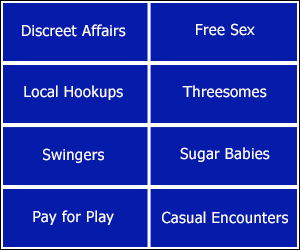Sociology, history, and economics have always seemed fascinating. It’s not clear how the economics and sociology of this industry is related to what’s going on outside. But it does seem pretty clear that economic and social forces must be changing the nature of the PLs and dancers who are a part of this industry.
Believe it or not, this industry suffers a pretty solid 5-6% inflation per year. PLs might not notice it, because clubs usually jack up cover prices and other service prices in fixed amounts every couple years. But long time PLs can probably remember when clubs had cover prices as low as $15 or $20 around the country. Nowadays, you can’t get into many places without dropping $40-$60 just to get in the door. With an industry whose inflation is as bad as something like college tuition and with most people having stagnant wages, how can it not affect who is working and consuming this industry?
There was obviously a major reset in the industry between the 2001 and 2009 recessions. This is the era of the “What happens in Vegas, stays in Vegas”. The industry seemed to get more focused and perhaps even more explicit to compete with the emergence of cheaper online thrills. There was a seediness to the industry where the workers often came from troubled backgrounds and the PLs obviously had less than gentleman like behavior.
The 2009 recession seemed to jolt the industry with another reset. The low end of the PLs got priced out while the industry became a much more acceptable career for workers. It was not uncommon to meet college and graduate school educated workers who were using the industry to accelerate wealth. The PLs also cleaned up a lot and while their intentions may be similar, their attitude and professionalism clearly seemed higher brow. The “gentleman’s club” was no longer just a euphemism. With increased buyer power and perhaps more open sexual attitudes too, there was a rise in the nasty factor of mileage activity. But even as the recession cooled, the industry simply couldn’t pull in increased demand, so clubs struggled to grow as dancers continued to up their mileage.
The 2015-2016 era was a very seminal moment for the entire world and impacted this industry as well. First, economic growth overall was on fire like never before. Meanwhile, social movements around harassment also shed a negative light on the industry. So increased PL demand from a growing economy and lower supply of workers clearly had a negative impact on mileage all the while clubs and their pricing were exploding in growth.
But then there was a final economic and social golden age before the pandemic. Much like after the 2009 recession, there was a rebirth in the industry where it seemed like the workers expanded again, viewing the industry as a source of empowerment. It was not uncommon to meet workers who worked part-time alongside a professional job or were using supplementary income to fund professional education. It was the Cardi B era. Mileage soared to levels not seen before, not out of economic desperation and demand/supply imbalance, but rather out of PLs and dancers both vibrantly and actively interacting in the industry economy. 2018-2020 was the perfect era for the industry with great people all around and great balance of interests between demand and supply.
The pandemic sadly was a death knell for many businesses and this industry was not immune to those forces. The industry experienced one of the worst periods combining hesitance and low demand from PLs with hesitance from dancers. Not surprisingly, the demand came back first leading to astronomical rises in cover charges and service charges. A PL could pay $50 to get into a club just to sit around for hours and never see a dancer he liked. Club suggested retail prices became jokes. Every dancer charges based on the individual demand she gets, which can often be up to 100% over the posted CSRP. This is only going to discourage more PLs and keep the industry in a weird and long term stagnation.
To make matters worse, the rise of OnlyFans and VR is a huge competitive force as well. Many of the workers who used the industry for income and empowerment are now able to avoid club fees and other hassles with nothing other than a camera.
The future remains unclear and we may be in for a lost decade in the industry. It doesn’t mean fun cannot be had or that it will always be a ripoff. But maybe 2019 for the industry could be the 2007 of shopping malls and bookstores, exhaling a final breath of vibrance before a gradual economic and social descent. Are there any other reasons to bet on or against the industry in the 2020s?


I think you mistakenly posted your Master's thesis here. Your professor is probably confused that you sent him a review of the Hong Kong Gentlemen's Club.